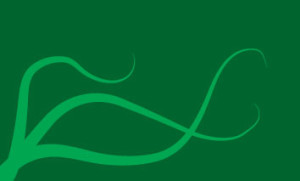
Species name: Bayvak (singular and plural: Bayvak, AKA Vorvak, Tharevok)
Full name: (Nitropneic) Panvrekavok Panvok Bayvavok
Average dimensions:
Average Height: 1m
Average Length: 1.3m
Weight: 40kg
Description: Bayvak are small, quadruped insectoid beings with stumpy short legs and light, chitin armour. They have chitin shells on their backs that hide two pairs of wings, similar to a dragonfly, but with butterfly-like patterns. Like other Panvok races, they have a hard shield on their heads. While their legs are stubby, their tails are very long, tipped with a hand-like pincer that can be used to pick things up. They have large eyes and small tusks on their jaws, used to chew wood into pulp, which they use to build their nests. Being Panvok, they can breathe two separate gases, in their case oxygen and carbon dioxide. They have glands in the insides of their mouths, with which they can spit venom at enemies.
Colouration: Almost all Bayvak are brightly coloured, with the brightest colours being in their wings and chitin, used to ward off predators and warn that they’re poisonous. The only exception to the bright colours are newborns, who are pale yellow in colour.
Abilities: All adult Bayvak have the ability to fly and cling onto walls with their incredibly strong claws. Most Bayvak are also immune to the majority of poisons and toxins near their nest, and can consume and combine these toxins if needed to scare away enemies. Their tails are very strong and can be used to suffocate enemies if needed, if they haven’t already been cut in half by their tail pincers.
Temperament: Bayvak are highly social beings which work together to build their nets together. They are easily frightened and will first try to scare enemies away before swarming them and clawing at their enemies. They are very tolerant of other races and will welcome lost or injured beings with open arms. Despite this, Bayvak are intelligent enough to know when they’re being used and will quickly exile anyone who angers them.
Diet: The primary source of nutrition for Bayvak is honey, which they make from the pollen, tree sap and fruits from around their nests. They will eat anything as long as it’s incredibly sweet and refuse to touch sour foods.
Life Cycle: Bayvak are laid in individual egg cells within a nest. Babies are small and squishy, with no armour to speak of, no wings and stubs instead of actual legs. Their main features grow in slowly over the first few weeks of their life, and they are constantly fed honey until their legs and tail are strong enough to pull them out of their cells. Younger Bayvak will maintain the nest and make new cells. Once their wings grow in, generally at the age of four, they will slowly start venturing away from the nest, at first as scouts and lookouts, then as gatherers of resources to make honey. Only the oldest and strongest Bayvak will mate and lay eggs. Once a year, stronger Bayvak who aren’t yet able to mate will take a small number of followers and fly off to form their own nests.
Culture: Bayvak worship the environment around them and will protect their home nests and the forests around them with their lives. Every day, scouts will patrol a nest’s territory and ward off any beings that threaten their forest. The gathering of tree sap is particularly sacred and is done in a special ceremony once a week by the elders of a nest, in such a way that it doesn’t hurt the trees involved.
Government: Nests are ruled by the strongest and oldest Bayvak in the nest, generally two males and two females – kings and queens of a nest. Large nests may have other, slightly younger Bayvak helping the leaders rule. The leader of all the Bayvak though is chosen via a convoluted ritual which involves leaving younglings just old enough to walk at the top of a mountain once every 5 years. Should a Bayvak make it down the mountain, they are declared ‘Tharebay’ and will deal with any issues that affect Bayvak as a whole. If there is a Tharebay already in power, they have a year to give up power or be killed by the new Tharebay.

Technology: Technology made by Bayvak appears primitive, but is held together via a special form of magic called Mayia, created by the Bayvak’s connection with nature. All their technology is made from natural, plant-based materials and their agricultural technology in particular is renowned across the Phoviverse.
Economy: The Bayvak’s Mayia allows them to gather far more resources from natural sources than any other race, and the excess is often traded away for lucrative amounts of money. Their biggest export by far is sugar.
